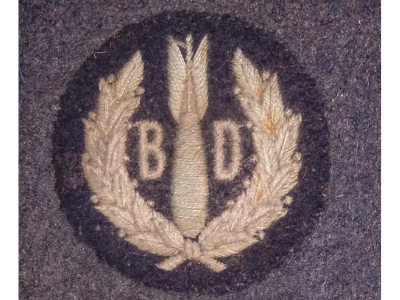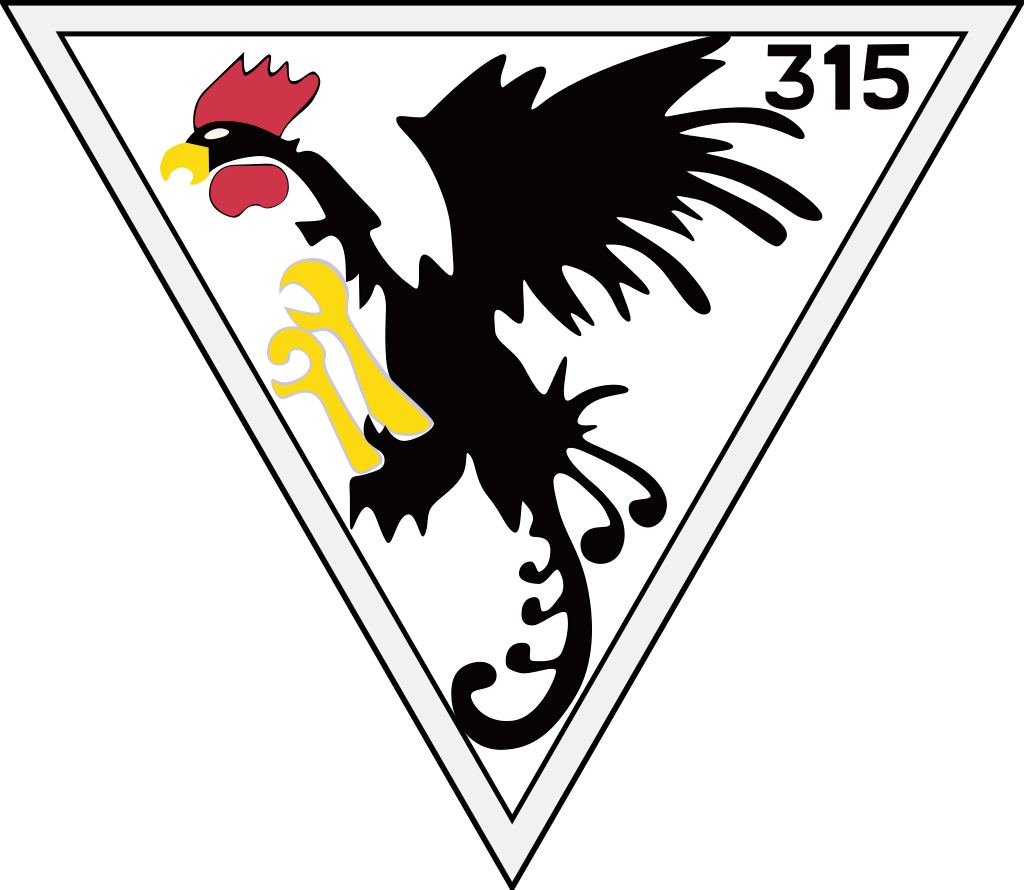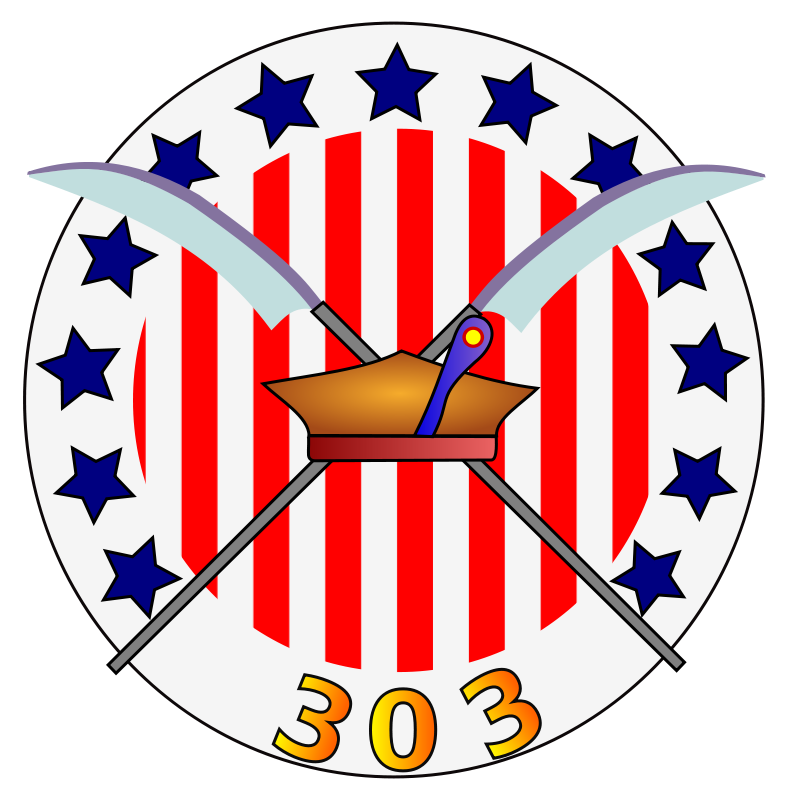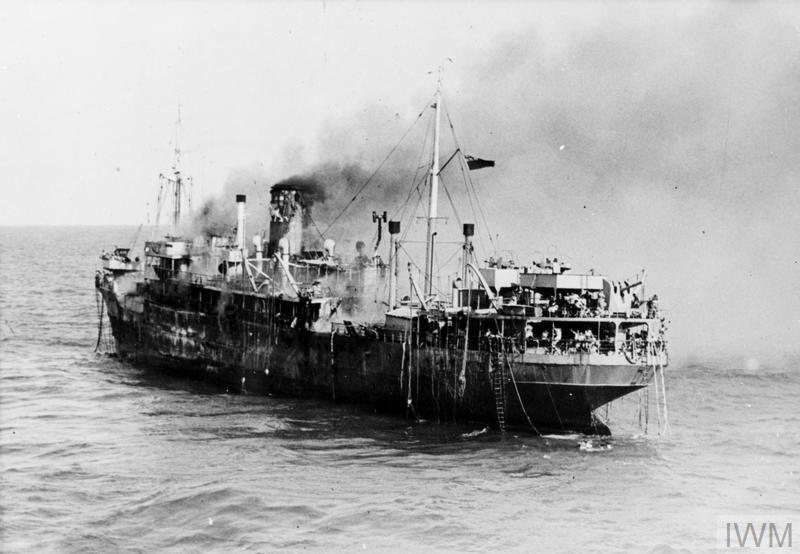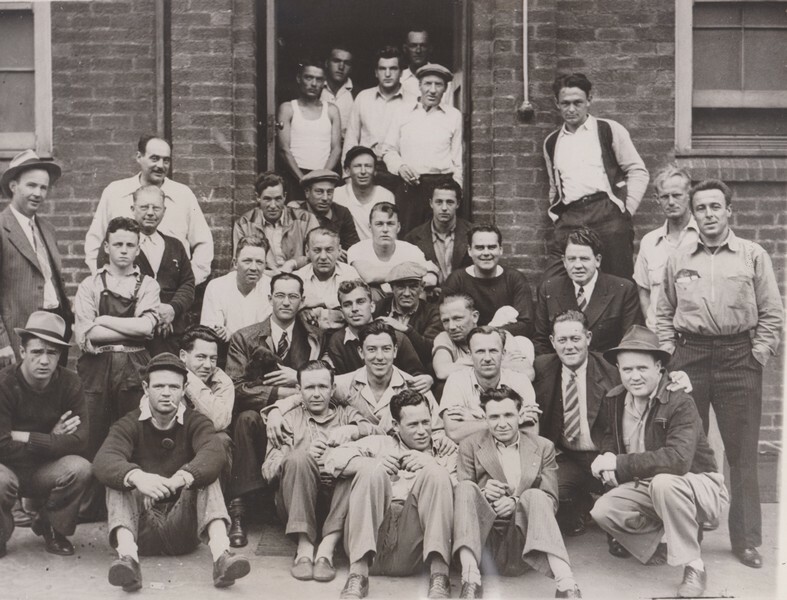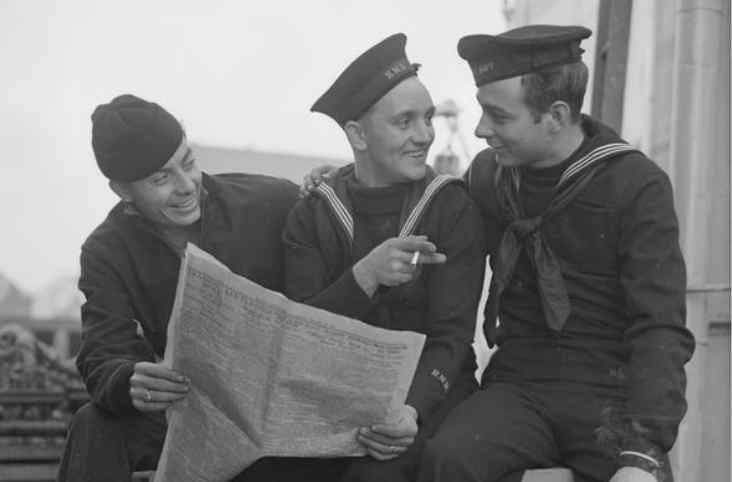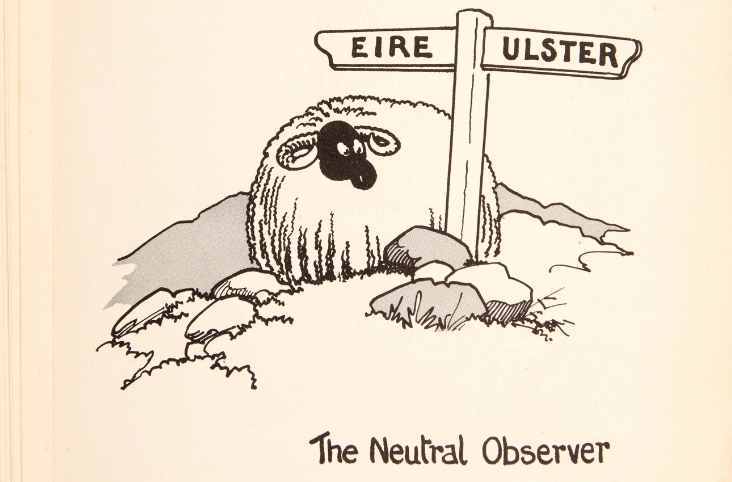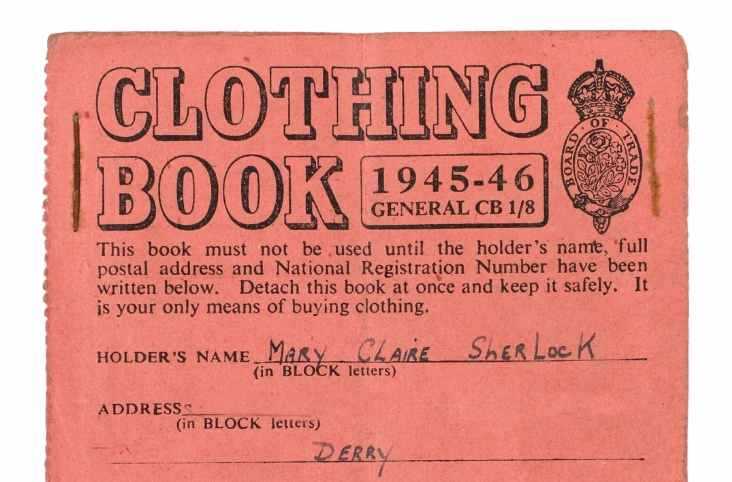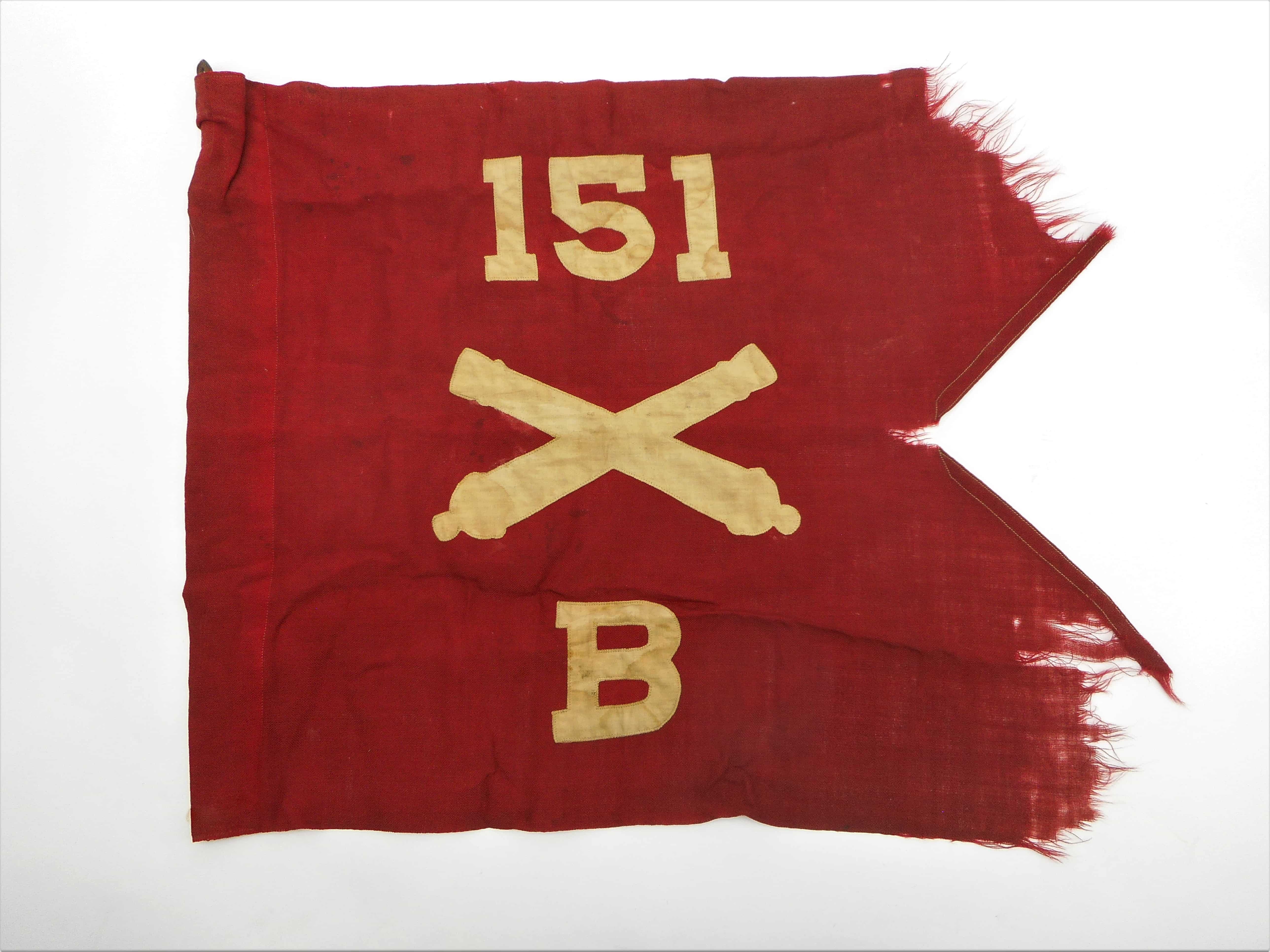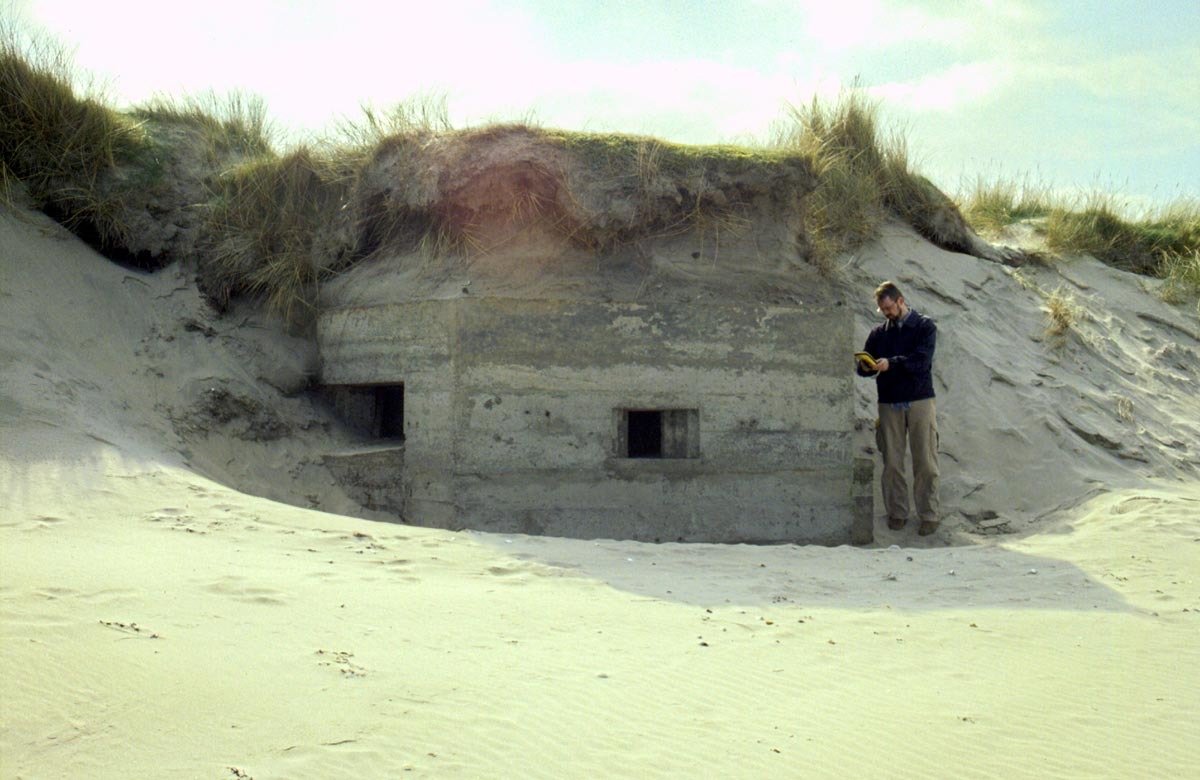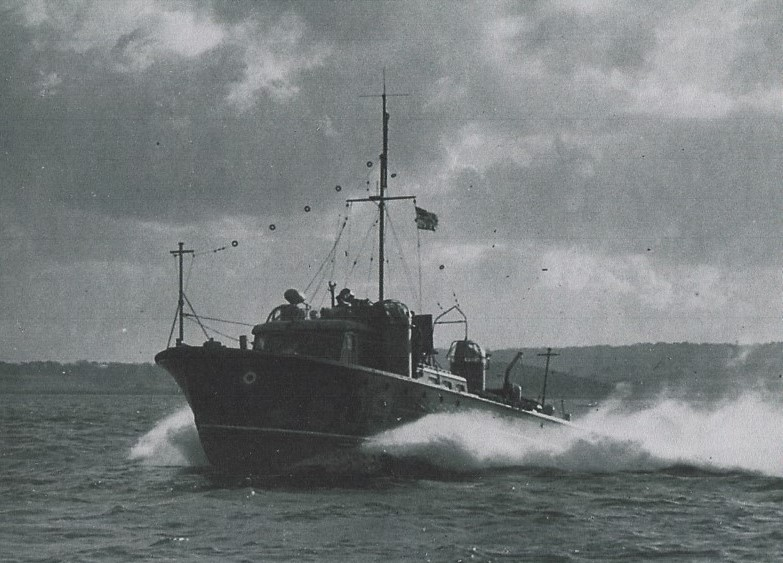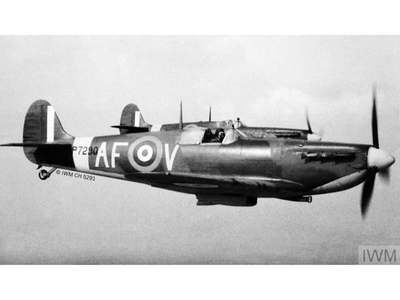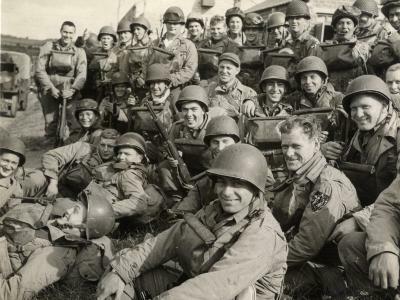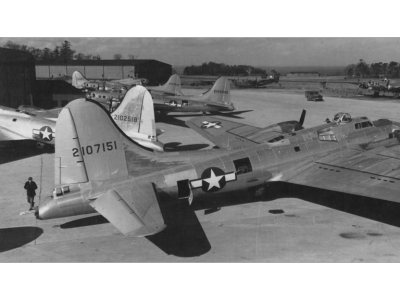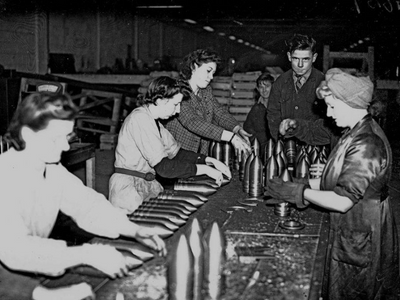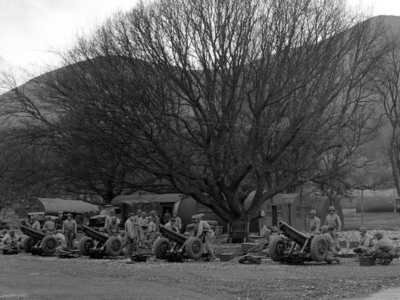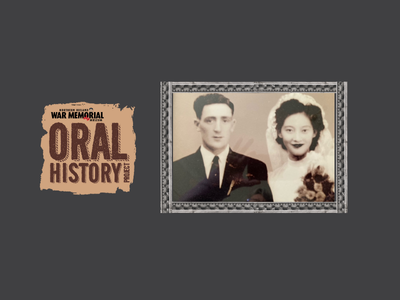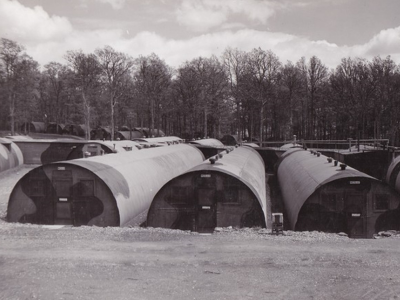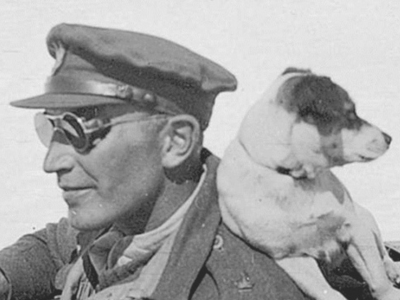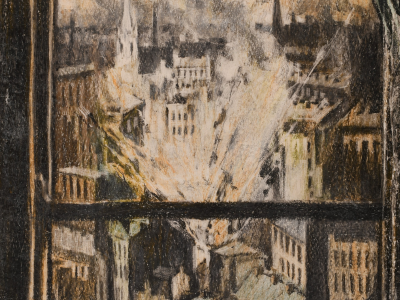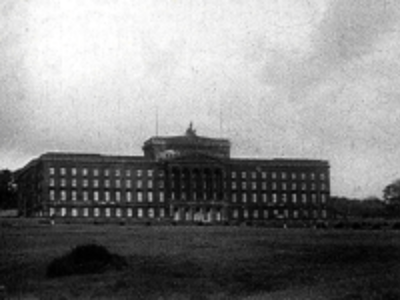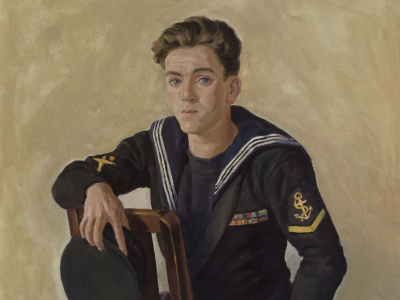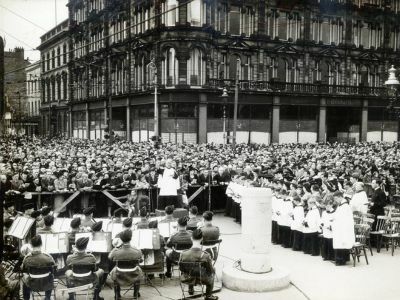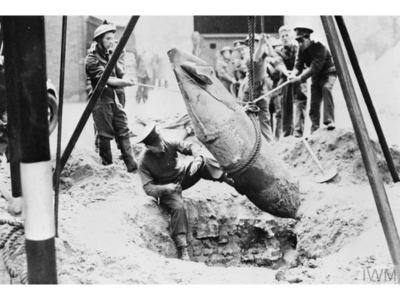On 12 May 1942, Brigadier General Leroy P Collins landed with the third contingent of the US Army’s deployment to Northern Ireland. It largely comprised of the final elements of the 34th Infantry Division and Collins was still an artillery commander in the division. The timing of his arrival was fortuitous, having coincided with the reorganisation of US field forces in Northern Ireland. V Corps assumed its role as a Striking Force and, more significantly, the European Theatre of Operations (ETO) was formally established.
In parallel was the introduction in the UK of the Services of Supply (SOS), a branch of the US Army that had only come into existence in February 1942. This wider reorganisation created a brief anomaly for the US Army in Northern Ireland. To retain command of SOS activity within the country, an interim administrative organisation called Northern Ireland Base Command (NIBC) was created while the restructure took place. It was activated on 1 June 1942 and was subordinate to both the HQ of United States Army Northern Ireland Force (USANIF) and the HQ of V Corps. Brigadier General Collins was appointed as the Commanding Officer of NIBC.
At this point, both HQ NIBC and HQ USANIF were based at Wilmont House near Dunmurry. When USANIF was disbanded through the formation of the ETO on 8 June, NIBC was left as the only HQ occupying Wilmont. Through the interim nature of its role, NIBC only operated until 20 July 1942, when the command ceased to exist, and Northern Ireland Base Section (NIBS) took over. The establishment of NIBS occurred in parallel with the formation of four other base sections across the UK. Brigadier General Collins was appointed to command NIBS but there was little opportunity for any honeymoon period. The introduction of Transportation Corps activities to logistical operations within Northern Ireland brought additional challenges and Collins soon found himself at loggerheads with the newly appointed port commander in Belfast, Colonel Stockton and the relationship between the two men was fraught with disagreements.
Some 21 service force units, including those from the Transportation Corps, Quartermaster Corps, Signal Corps, Medical and Engineers were now Collins' responsibility under his command at NIBS. Yet, by the autumn of 1942 Collins had successfully established himself not only at NIBS but also within Northern Irish society as civic and social engagements became a prominent part of his itinerary. For instance, at the beginning of October he attended the formal opening of Belfast's American Red Cross club on Chichester Street and a joint farewell party given in honour of Rear Admiral R M King (Flag Officer-in-Charge Belfast) and Air Vice-Marshal J Cole Hamilton (Air Officer Commanding Northern Ireland) at Belfast’s ‘400 Club’.
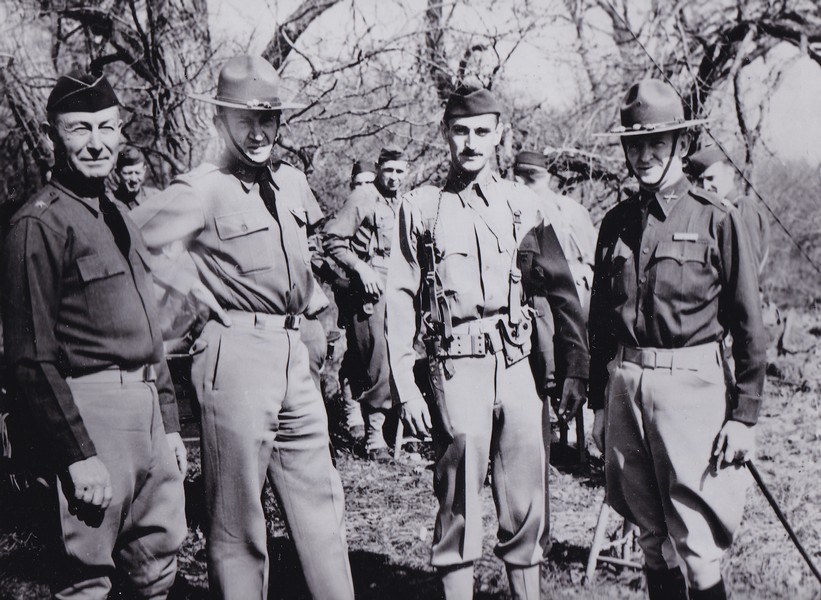
As American troops in Northern Ireland deployed to North Africa in November 1942, the need to retain service forces at their previous levels rapidly diminished. The five UK base sections were reorganised and NIBS was absorbed into Western Base Section (WBS), relegating Northern Ireland to a subordinate position designated as Northern Ireland District (NID). As a result, Collins left Northern Ireland but not before a dinner was held in his honour in Belfast's Grand Central Hotel where he was presented with a gift by Colonel Howard J Rouse, District Commander of Belfast Area.
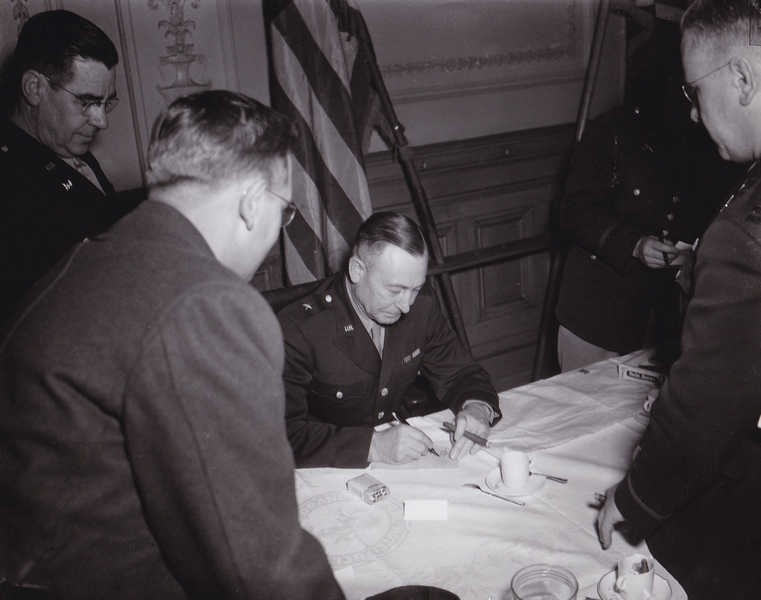
Collins was assigned to command WBS from its HQ in Chester, where over the following months the number of units under his command more than doubled from 130 in January 1943 to 266 by August 1943. Collins’ efforts at WBS during this period were noted and applauded, with Major General John C H Lee in overall command of SOS operations in the ETO, stating,
'I wish to say that wherever he has gone, he has improved the organization and started many things that delighted me and have improved our efficiency. I am going to listen and learn from a very distinguished soldier.'
Although Northern Ireland was now a district under the control of WBS, Collins' position afforded him the opportunity to keep abreast of activities and events there. During his period in command of NIBS, Collins had developed a perception that many within the army never properly appreciated the nuances peculiar to operations in Northern Ireland. He is on record as saying that,
'The most important thing in relations with both the British and Northern Ireland Government is to appreciate the fact that they have their own way of doing things, that we are their guests here, and that they have not the slightest intention of changing their traditional system to accommodate our own ideas and practices'.
He surmised that the US Army, 'Must learn to understand then integrate themselves with the British or North Irish way of doing things'. Collins' insight and overview of SOS operations within Northern Ireland could only have benefited WBS and ultimately contributed to him returning again.
As significant numbers of American troops were again deployed to Northern Ireland in late 1943, the corresponding expansion of SOS activities in the country saw its status once again attain that of base section, with four subordinate districts of its own. On 6 October 1943, General Collins was relieved of command of WBS and reposted to Northern Ireland to take command of the newly reactivated NIBS. One of Collins' earlier misgivings concerning his previous reassignment from NIBS to WBS in 1942 was that an effective operating team had been broken up in the process. In contrast, when NIBS was reactivated, Collins made sure his established team was reassigned with him.
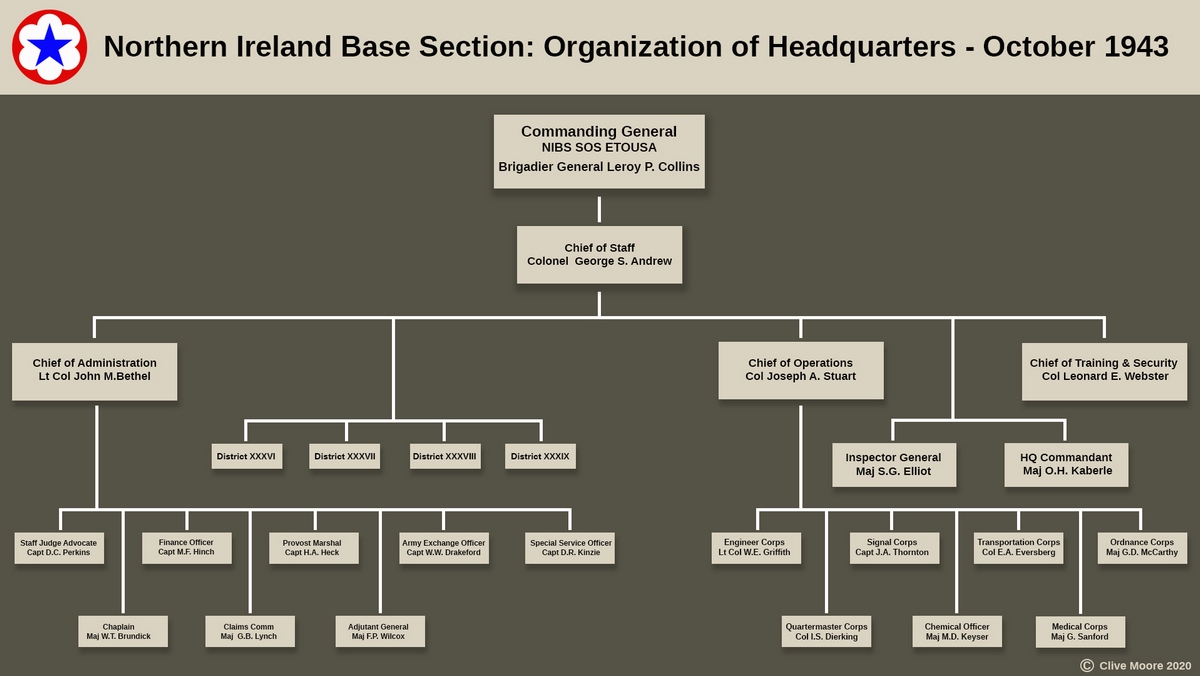
His actions helped ensure that when field forces arrived, everything was already running smoothly. Within a week of NIBS reactivation, the first elements of the 5th Infantry Division began to arrive from England, followed less than a week later by the 2nd Infantry Division. NIBS ensured that all inbound divisional troops were housed and fed immediately, without any significant problems or delays and Collins himself was often present at the quayside as troops disembarked. His efforts received commendation from Major General W M Robertson, Commanding Officer of the 2nd Infantry Division with the entire process of disembarkation, feeding and billeting being described as going better than could have been expected.
Although Collins’ role primarily involved activities in Northern Ireland, his position also required him to frequently attend staff conferences with the other base section commanders at SOS HQ in England. From there Major General Lee issued theatre directives and general orders which in turn were implemented through the base sections. In addition to these Collins was responsible for orders and directives specific only to the regional requirements of NIBS. Prominently during late 1943, Collins oversaw the reorganisation and redesignation of Quartermaster Depots and the establishment of Ordnance Depots across Northern Ireland that were required for supplying the increasing numbers of field forces.
One of the lesser publicised branches of the US Army that also came under the jurisdiction of SOS and therefore Collins, was the provision of welfare through the Special Service Section. This included the publication of the US forces newspaper, Stars and Stripes. In the Belfast Telegraph building on 6 December 1943, Collins pressed the button to start the presses rolling off the first copies of the Northern Ireland edition of Stars and Stripes. Collins said, 'We welcome the new baby, and wish it all success in what we hope will not have to be too long a life.' In his promotion of forces welfare, Collins also championed the bringing of Irving Berlin’s ‘This is The Army’ to Belfast, for an extended run of performances at the city’s Grand Opera House.
Collins’ position as the most senior US Army Officer stationed in the greater Belfast area led to him being frequently selected as the American representative at numerous civic and military events in the city. He inspected units of the Belfast City Battalion of the British Army Cadet Force at Methodist College and accompanied Colonel Gorbatov (the Soviet Embassy Representative) during an Allied parade in Belfast on 15 January 1944 to commemorate the Red Army’s formation. It was Collins who took to the podium at City Hall during the ‘Salute the Soldier’ war savings campaign, when American personnel marched nine abreast followed by Jeeps, armoured cars, and artillery. The Belfast-Newsletter reported, 'the crowd saluted one soldier in particular, Brig Gen Leroy P Collins-who stood coatless throughout a passing April downpour which sent many people scurrying for shelter.' Perhaps more unusually, Collins presided over a ceremony at which George William Frederick McKinney, of Marfa, Texas, became the first member of the United States military service to receive his American citizenship in Northern Ireland. McKinney‘s father had been a minister in what would become Northern Ireland before moving to Canada in 1900. Following in his father’s footsteps, George McKinney was ordained and transferred to an Episcopal Church in Texas before he enlisted in the US Army in October 1940 and became a chaplain.
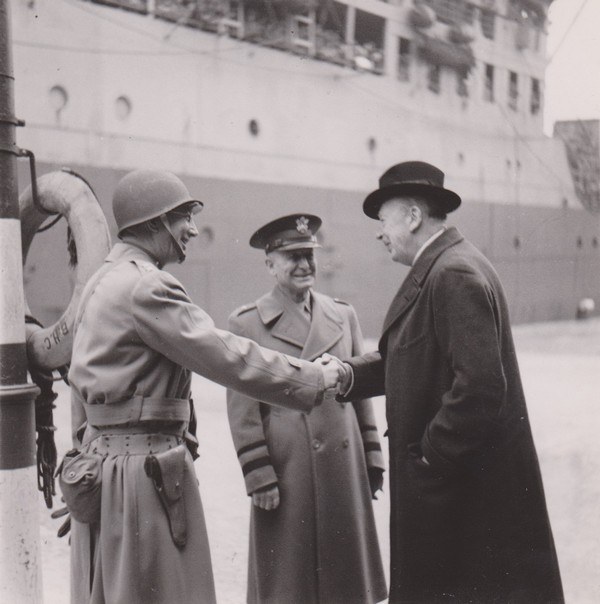
Members of Collins’ own family had also entered into military service, with both his sons joining the US Army and serving in the Pacific. His son-in-law, William E Gunther, fought in Tunisia and Italy before briefly joining him in Northern Ireland. Gunther would go on to serve at the Supreme Headquarters Allied Expeditionary Force (SHAEF) that was formed in December 1943 under the command of General Eisenhower. SHAEF’s formation was integral to the Allied invasion of mainland Europe. Contributing equally to that were the numerous US Army SOS units across the UK, including NIBS, that facilitated what was at the beginning of 1944 the peak number of US Army personnel in Northern Ireland.
Nonetheless, US Army units gradually began to withdraw from Northern Ireland and the SOS contingent also diminished proportionally as D-Day approached. This time there would be no eventual return and with its task of supporting the field forces complete, NIBS was formally disbanded on 15 June 1944. The remaining SOS activities were consolidated and Northern Ireland once again reverted to the status of a single district under control of WBS. For Collins, his association with both NIBS and WBS also finished and he took command of a new organisation, Base Section 2. Initially this was based in Southport but it deployed to France in August 1944, first to La Haye-du-Puits then south to Le Mans where it was redesignated as Loire Section. Many of the officers there had served with Collins in at least one of his prior commands, with some going back as far as June 1942 in Northern Ireland. Their retention continued his established ethos that an effectively functioning team should not be broken up.
From modest beginnings at Wilmont House, Collins now found himself in the former HQ of the German Seventh Army where their hasty retreat provided the new American tenants with an adequate supply of furniture and ample maps. Aside from their environment, there was little difference in the role performed by Collins and his team at the Loire Section to any of those at previous base sections, with the possible exception of two Prisoner of War camps now under their jurisdiction. Yet as the Allies rapidly advanced and French ports were opened along the English Channel, there was correspondingly less activity in Loire Section. Collins was notified on 17 November 1944 that the section was to be disbanded, with its functions to be amalgamated with Brittany Base Section at Rennes.
Lasting over forty years, Collins’ military career was nearing its end. In March 1945, before the end of the war in Europe, he retired from the army and active service. His contribution to the service forces and its operations in England and Northern Ireland was by no means insignificant. After his deployment to France, his achievements were recognised and he was awarded the Legion of Merit and the Bronze Star for exceptionally meritorious conduct in the performance of outstanding services as a commanding general during the period 24 December 1942 to 6 June 1944. Yet like so many who served in supporting roles, their often unsung efforts have largely been forgotten with their names relegated to dusty memorandums, directives and documents found deep in the archives of military history.
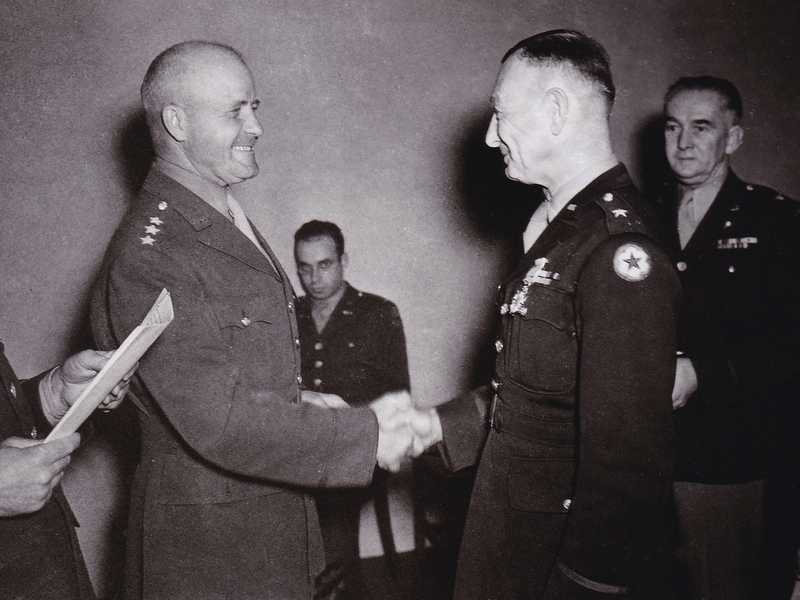
In his retirement, Collins settled near friends in Powhatan County, Virginia, purchasing an old home, restoring it, and spending time with his family and the community. He was instrumental in the construction of the St Luke’s Episcopal Church Parish House in 1952-53 and served as Junior and then Senior Warden on the Vestry, while the rural environment also provided an opportunity to reacquaint himself with equestrian interests he’d first developed during his time in the US Cavalry.
Leroy Pierce Collins passed away on 14 May 1981 aged 98, and was laid to rest in the small and unassuming rural setting of Saint Luke’s Cemetery, Subletts, Powhatan County.
About the author:
Clive Moore runs the US Forces in Northern Ireland during WW2 Flickr page and is the author of the upcoming NIWM book, The American Red Cross in Northern Ireland during the Second World War.




